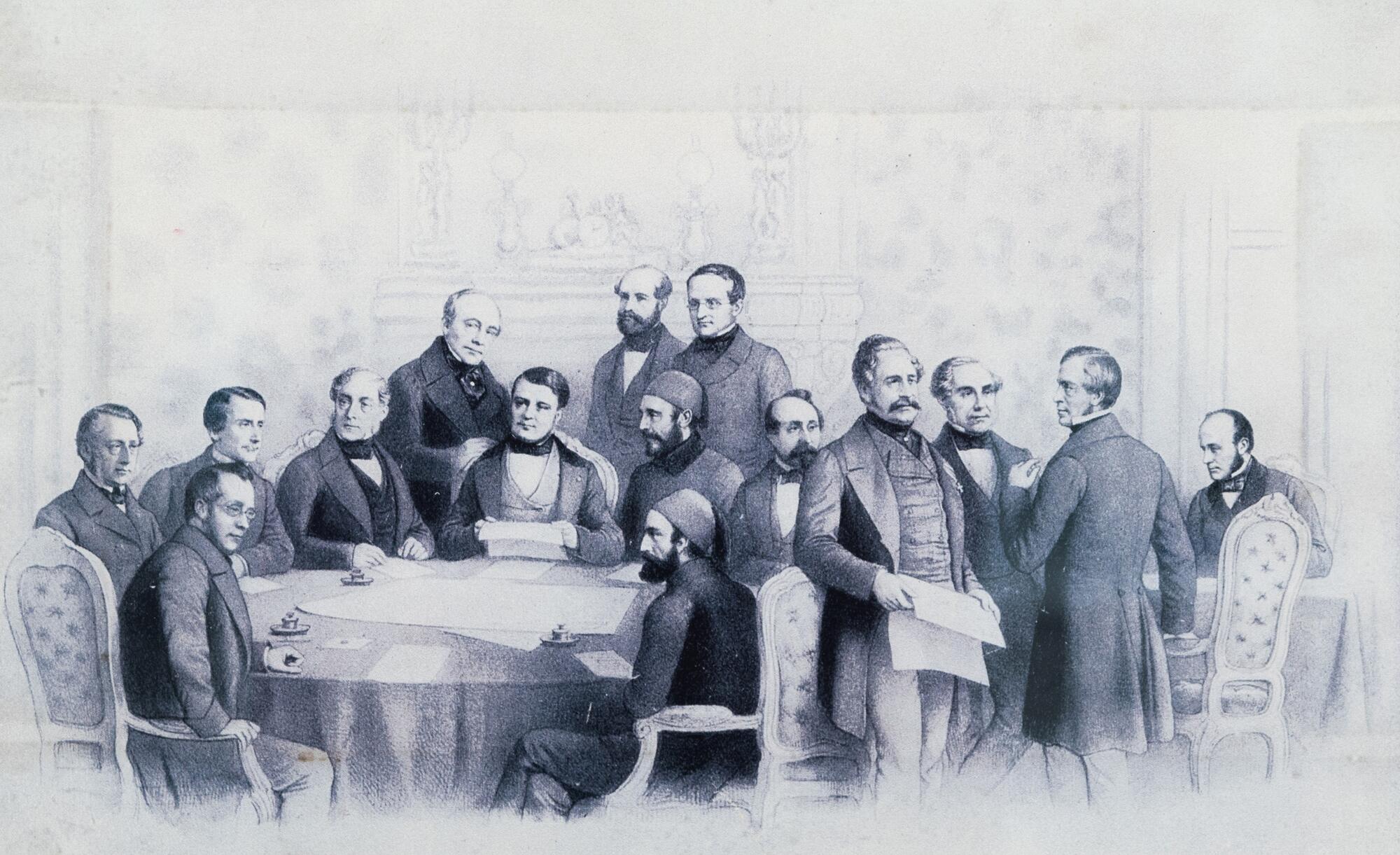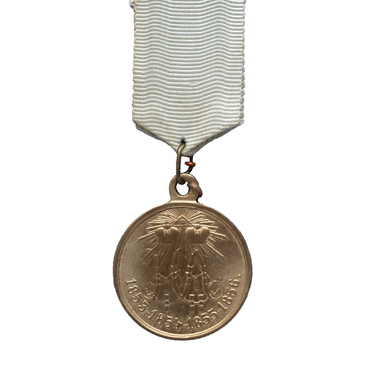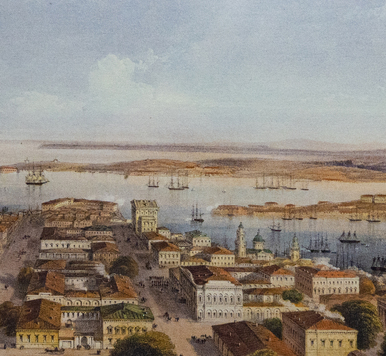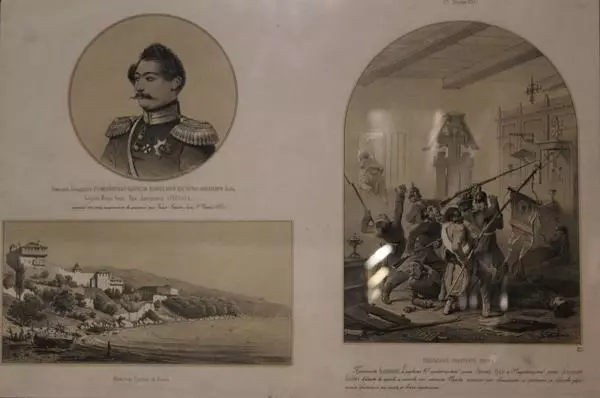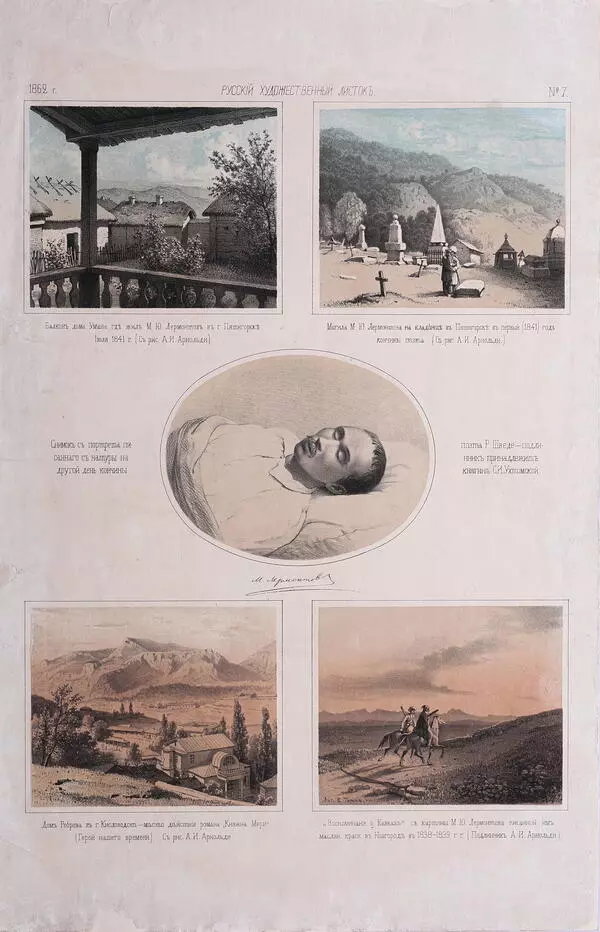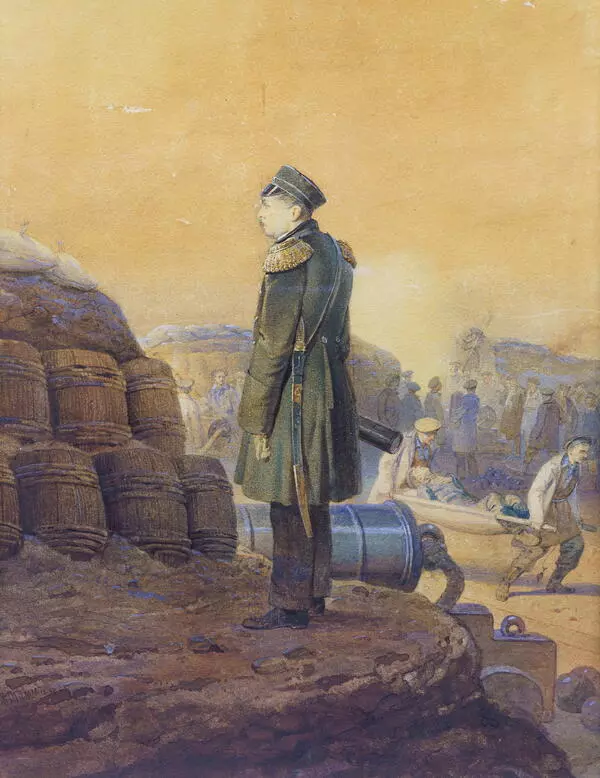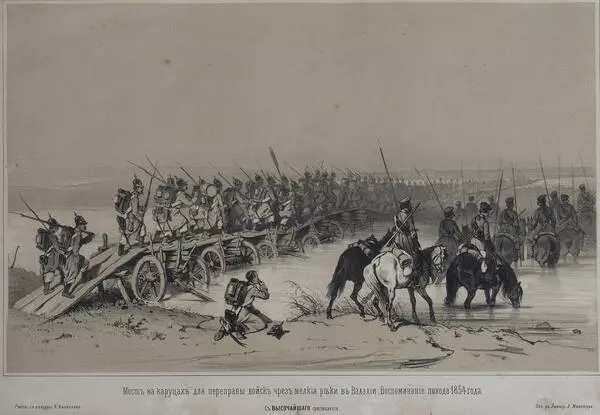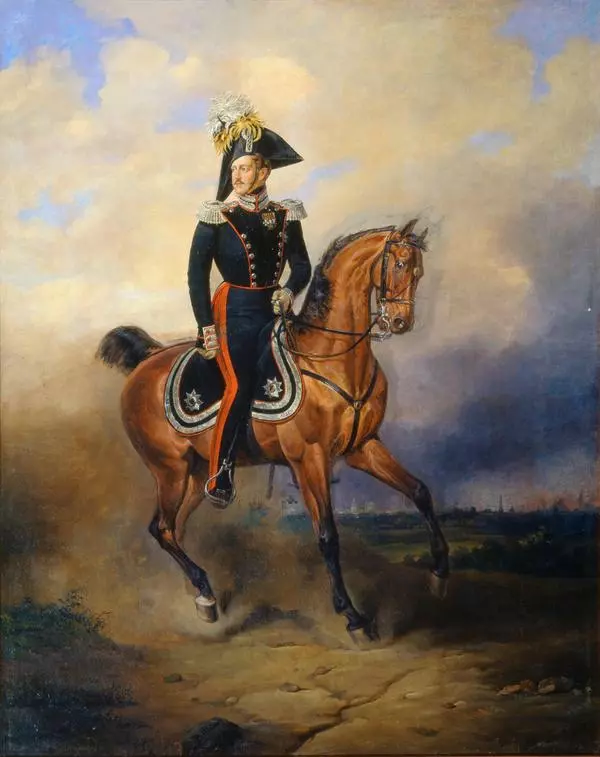Lithograph “Meeting of the participants of the Paris Congress. 1856” was created by the Russian painter and graphic artist of German origin Vasili Timm (Georg Wilhelm Timm). On a print measuring 24 by 34 centimeters, the artist captured the meeting of the conference, attended by the plenipotentiaries for peace that came to Paris.
The artist depicted a high hall decorated with stucco molding, a fireplace behind the backs of the congress participants, a round table, high-backed chairs, a mirror, and portraits on the wall. 14 people negotiate at the table. A little apart from the others, a secretary sits at a small separate table.
The Paris Congress was an international negotiation that began in February 1856. Its main goal was to end the Crimean War. It was attended by representatives of several countries: Russia, France, the British Empire, the Ottoman Empire, Austria, Sardinia, and Prussia.
Russia took part in the Paris Congress by the decision of Emperor Alexander II. The Paris Peace Treaty, or the Treaty of Paris, was signed by the parties on March 18, 1856. According to it, Russia agreed to freedom of navigation on the Danube, ceded a number of lands to the Moldavian principality and Turkey, and in exchange for it, recaptured Sevastopol, Balaklava, Kinburn, and other lands which were occupied by the allied forces. The most important point was that all Black Sea states were prohibited from building military fleets on the Black Sea.
Vasili Timm was born in 1820 in the Sorgenfrei country estate (now Riga). He received his first artistic skills at home and later moved to St. Petersburg, where he attended classes at the Imperial Academy of Arts.
Battle and genre scenes became the main theme in Timm’s artwork. For his achievements in battle painting, he received two silver medals of the Academy — small and large. In 1839, Timm graduated from the course and five years later went to Paris. He worked under the French artist Horace Vernet. Later he visited Algeria, which inspired the paintings that made him famous in Parisian salons: “Capture of Smala”, “Arab improviser at the Babel-Oued Tower, in Algeria” and others.
In the 1840s, the artist traveled a lot and illustrated the collection “Russians painted from life by Russians” and other publications. And in 1851, with the permission of His Imperial Majesty, he began to publish a periodical collection of lithographs called “Russian Art Leaflet”. Timm placed his works and lithographs of other artists in it. They were printed in two-tone colors and accompanied by a small explanatory text. The drawings were prepared for publication in the workshop of the Petersburg lithographer and publisher Alexander Muenster. The collection also includes a lithograph “Meeting of the participants of the Paris Congress” from the museum.
The artist depicted a high hall decorated with stucco molding, a fireplace behind the backs of the congress participants, a round table, high-backed chairs, a mirror, and portraits on the wall. 14 people negotiate at the table. A little apart from the others, a secretary sits at a small separate table.
The Paris Congress was an international negotiation that began in February 1856. Its main goal was to end the Crimean War. It was attended by representatives of several countries: Russia, France, the British Empire, the Ottoman Empire, Austria, Sardinia, and Prussia.
Russia took part in the Paris Congress by the decision of Emperor Alexander II. The Paris Peace Treaty, or the Treaty of Paris, was signed by the parties on March 18, 1856. According to it, Russia agreed to freedom of navigation on the Danube, ceded a number of lands to the Moldavian principality and Turkey, and in exchange for it, recaptured Sevastopol, Balaklava, Kinburn, and other lands which were occupied by the allied forces. The most important point was that all Black Sea states were prohibited from building military fleets on the Black Sea.
Vasili Timm was born in 1820 in the Sorgenfrei country estate (now Riga). He received his first artistic skills at home and later moved to St. Petersburg, where he attended classes at the Imperial Academy of Arts.
Battle and genre scenes became the main theme in Timm’s artwork. For his achievements in battle painting, he received two silver medals of the Academy — small and large. In 1839, Timm graduated from the course and five years later went to Paris. He worked under the French artist Horace Vernet. Later he visited Algeria, which inspired the paintings that made him famous in Parisian salons: “Capture of Smala”, “Arab improviser at the Babel-Oued Tower, in Algeria” and others.
In the 1840s, the artist traveled a lot and illustrated the collection “Russians painted from life by Russians” and other publications. And in 1851, with the permission of His Imperial Majesty, he began to publish a periodical collection of lithographs called “Russian Art Leaflet”. Timm placed his works and lithographs of other artists in it. They were printed in two-tone colors and accompanied by a small explanatory text. The drawings were prepared for publication in the workshop of the Petersburg lithographer and publisher Alexander Muenster. The collection also includes a lithograph “Meeting of the participants of the Paris Congress” from the museum.
